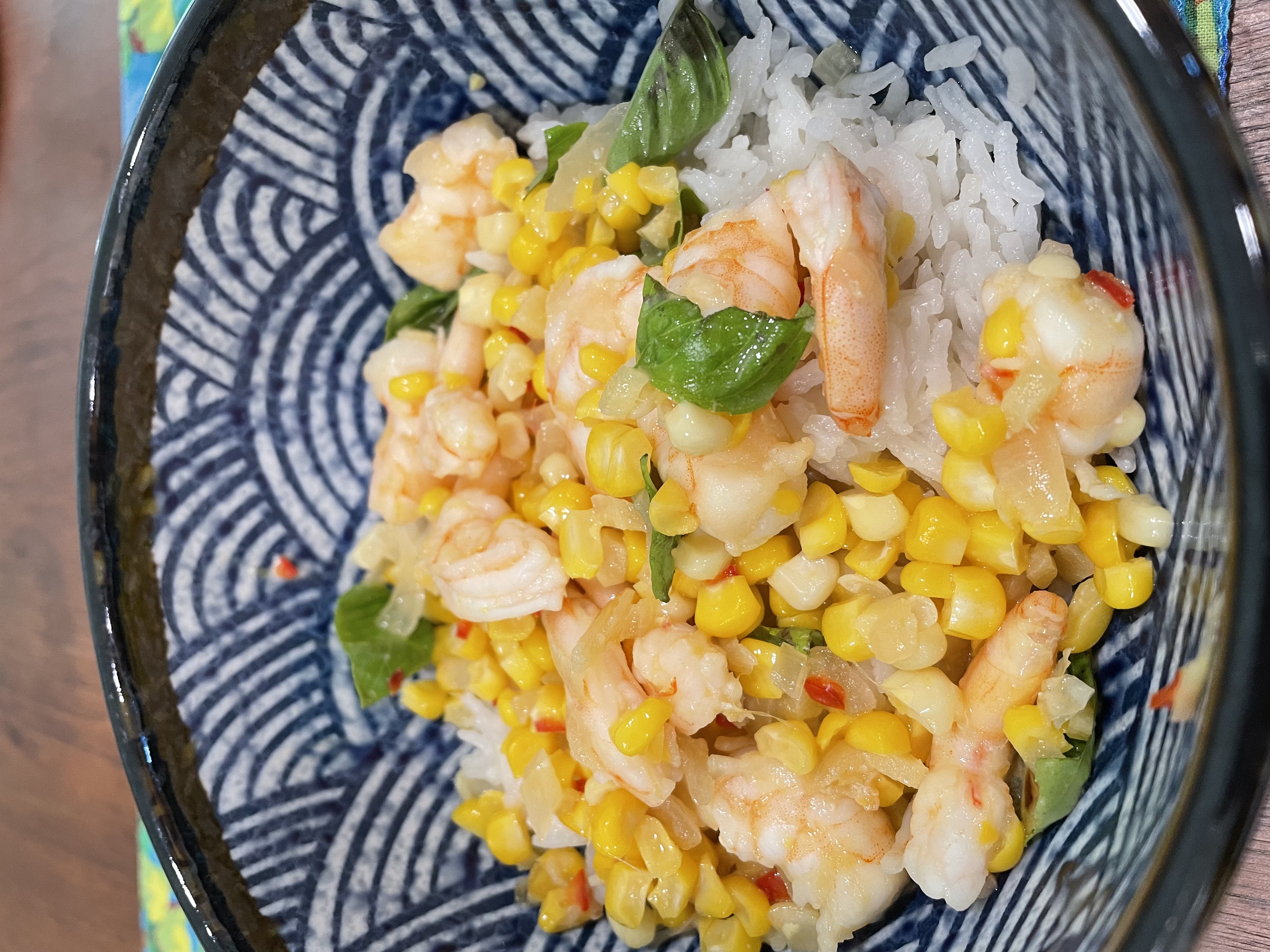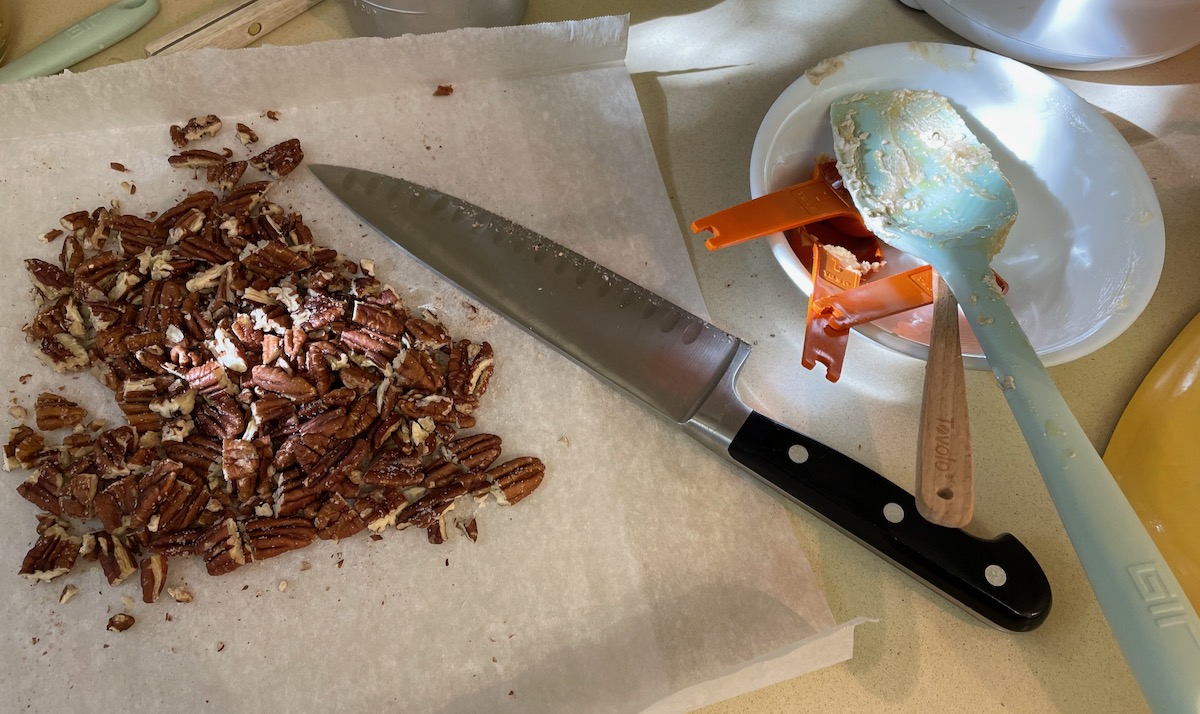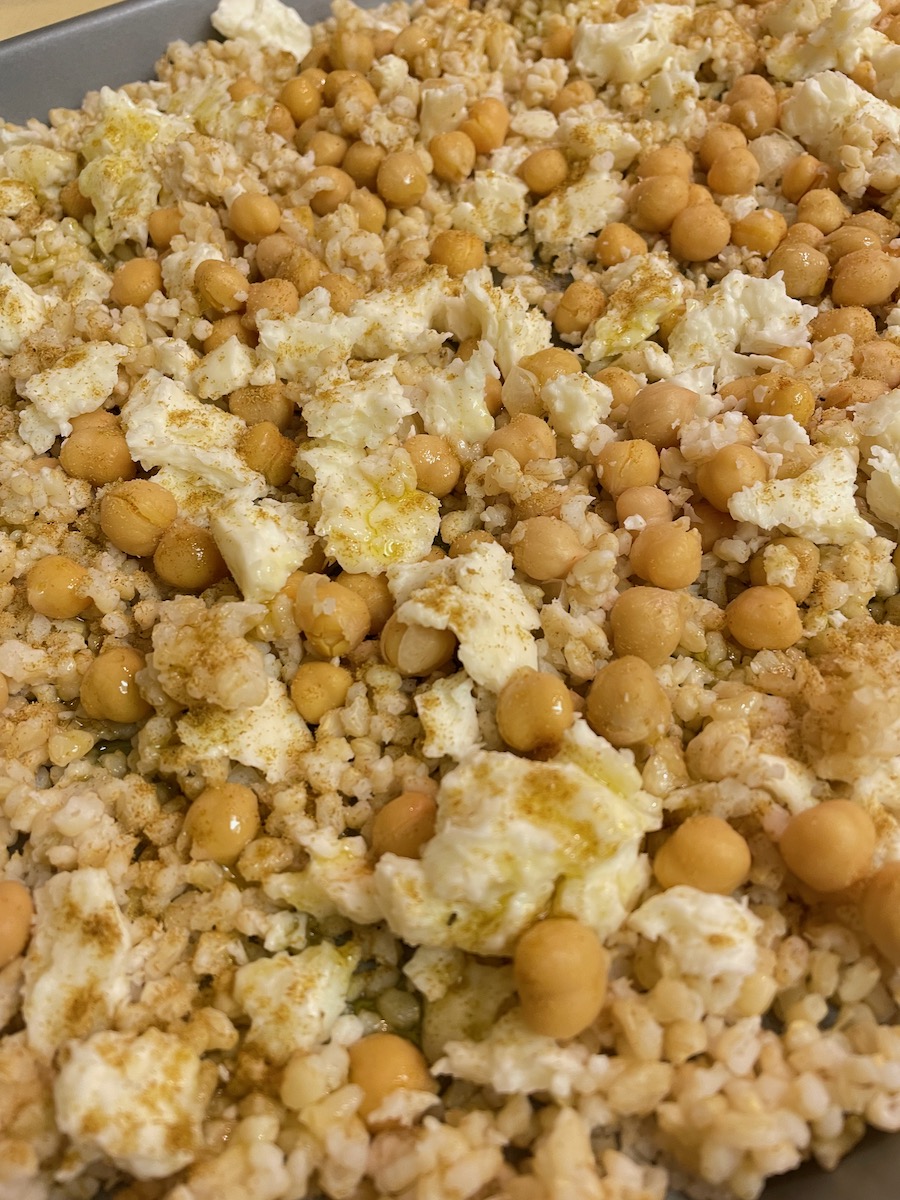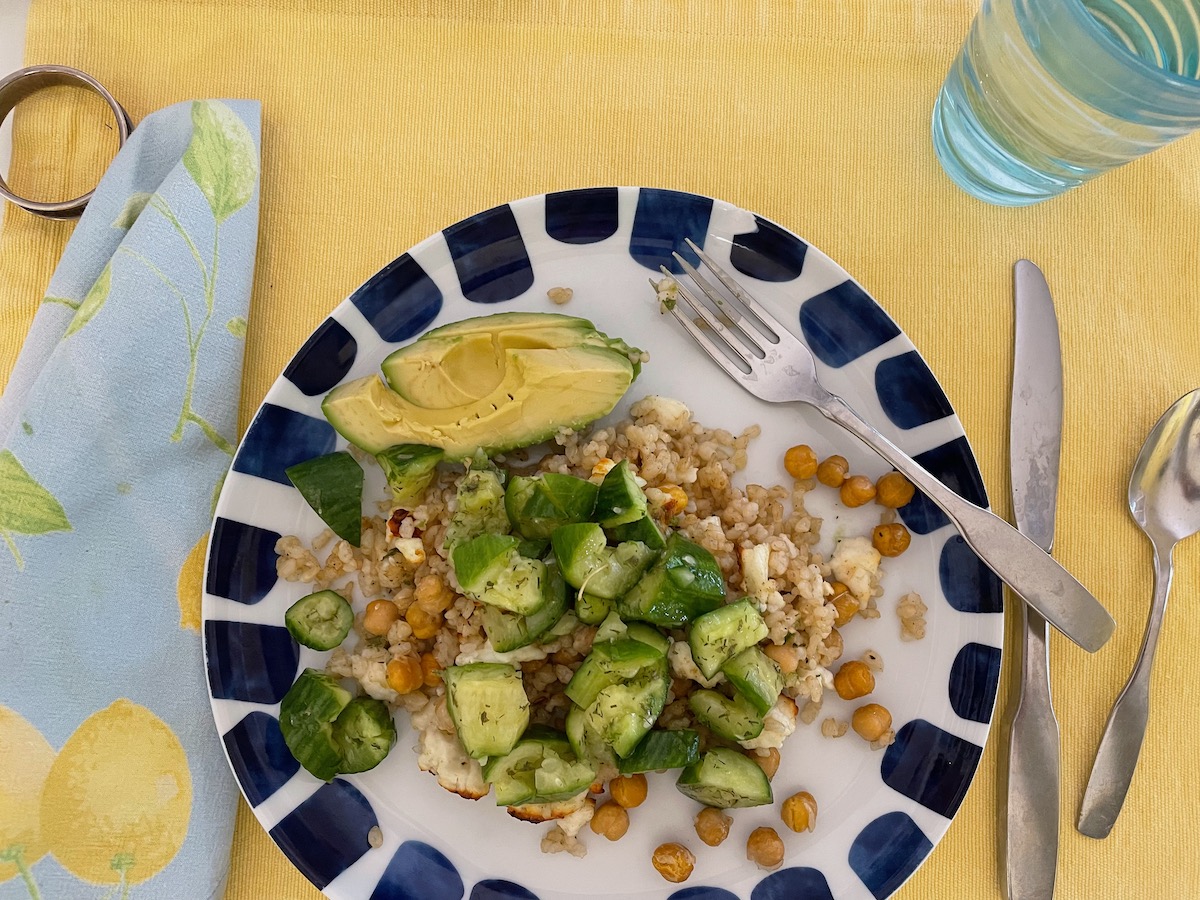Inspired by a recipe from the New York Times, it’s easy to make the rice in a rice cooker, cook the aromatics and corn together, adding the shrimp at the end. Some say to cut down on the amount of rice, so you’ve been warned. (Or up the amount of vegetables and corn?)

Rinse 1 1/2 cups jasmine rice until water runs clear. Drain well then place in rice cooker. Add 1 can (14 oz) low salt chicken broth and 1 can (14 oz) coconut milk. Stir, then set up to cook the rice.
Rinse 14 ounces shrimp (tails and shells off), cut in half and set aside.
Cut the kernels off 4 small ears of corn. I do this by standing it in a large bowl, letting the kernels be caught by the bowl. Set aside.
In a large flat pan, heat 4 tablespoons olive oil. Add 1 small yellow onion, chopped along with 1 finely chopped Thai red pepper (they are mild) OR 1 jalapeño, making sure to remove seeds and membranes. (Red pepper flakes can be substituted; add near the end)
Sauté over medium-low heat for 3-4 minutes, then add 2 grated garlic cloves. Stir.
Add corn, continue to cook on medium-low heat, tossing the corn with the aromatics. Add the shrimp, tossing, but not overcooking. Correct the seasoning by adding:
- salt and pepper
- splash of fish sauce
- 2 Tablespoons lime juice
- lime zest, if you have it
- 1 teaspoon sugar
After tossing together, taste. Add more of whatever seasoning you think is missing: salt or tangy.
Because the ratio of rice to the vegetable mixture may vary, I’d spoon the cooked rice into a serving bowl, then add the vegetables over the top.
Garnish with fresh, torn basil leaves.














